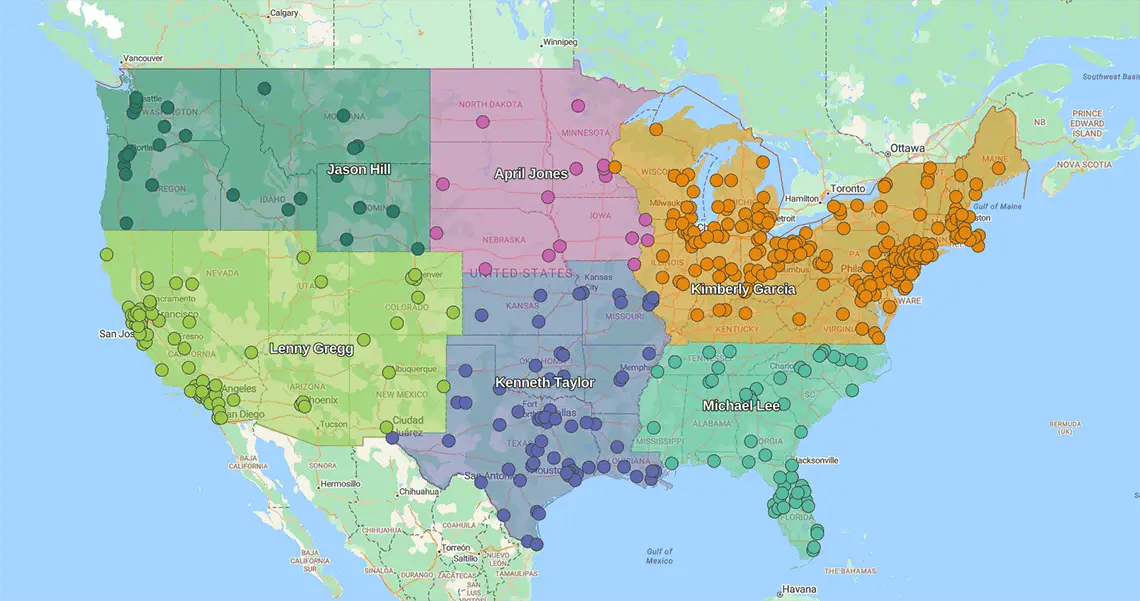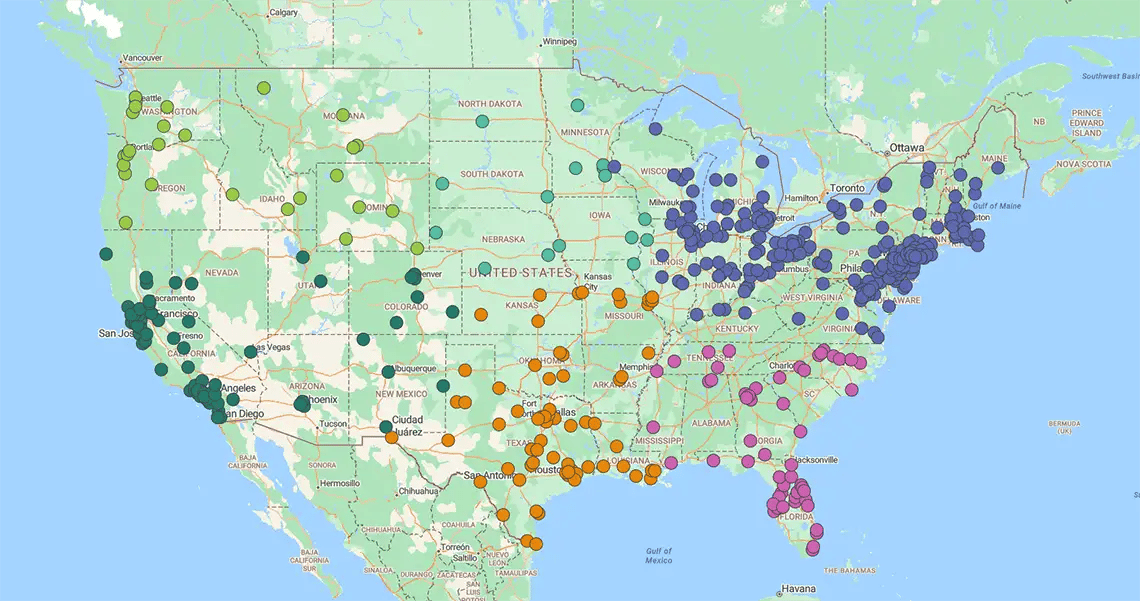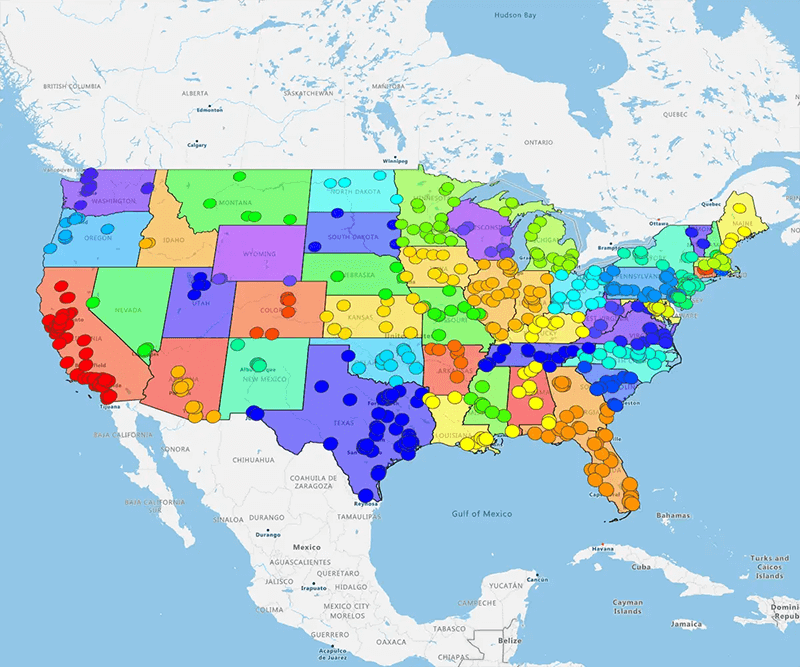Quick answer
Key Takeaways
- Sales territories can be geographic, account-based, or hybrid. Each supports different sales goals
- A strong territory plan aligns reps, accounts, and goals for smarter, more efficient coverage
- Analyze markets, segment customers, and use data-led tools to design high-impact territories
- Clean data, stakeholder input, and the right software are essential for effective planning
- Great territory plans improve sales performance, reduce costs, and support long-term growth
Sales territory planning doesn't have to be overwhelming. However, with the right tools, you'll realise that getting it right is one of the smartest moves you can make for your team—and your bottom line.
In this guide, you'll learn how to:
- Understand what a sales territory is and why it matters
- Build a strong, balanced sales territory plan from scratch
- Use data to make smarter hiring and resource decisions
- Align the right reps to the right accounts or regions
- Tap into tools (and a free template) to simplify planning
What is a Sales Territory?
A sales territory is a customer group, market segment, or geographic region assigned to a sales rep for focused outreach. How a sales territory is defined contributes significantly to efficiency, customer relationships, and performance tracking. Next, we'll cover the three approaches to designing sales territories.

Geographic
Here, you assign a sales rep to a group of customers in a defined region—like ZIP codes, counties, or states. This model simplifies travel planning and ensures reps become familiar with local buying behaviors. It's ideal for businesses prioritizing proximity and regional familiarity.

Account-based
Many organizations ignore geographic boundaries and use an account-based or point-based design. This method strengthens high-value relationships and ensures top clients get specialized attention. Assigning accounts to a senior sales rep or manager, regardless of location, solidifies customer relationships.

Hybrid
As the name suggests, this approach combines geographic and point-based territory design. It balances rep strengths with business priorities, allowing teams to capitalize on local expertise and account value. The approach is ideal for complex sales environments.
What is a Sales Territory Plan?
A sales territory plan is a strategic framework that aligns reps, accounts, and goals within defined boundaries. As demonstrated above, these boundaries are not necessarily geographic, but always aim to help sales teams operate more efficiently. A strong plan reduces overlaps, increases accountability, and targets the right customers with the right resources.
How to Create a Sales Territory Plan
Learning how to create a sales territory plan will help ensure your business avoids missed opportunities and deploys reps optimally. We have broken the process into four main stages: market analysis, customer segmentation, SWOT analysis, and plan creation. Following each step ensures better sales coverage and smarter growth decisions.
Step 1
Analyze Your Market
The first step to creating a successful sales territory plan is collecting and analyzing market data. Include an assessment of buying trends, past sales targets and performance, competitor activity, and other relevant data points.

By collecting data on buying behaviors, competitor locations, and sales potential, you uncover key patterns and strategically approach territory mapping, tailoring it to market needs.
Step 2
Segment Your Customers
After analysis, the next step is segmenting your customers into groups based on location, competitive landscape, behavior, industry, and value. A primary goal should be to quickly rebalance customer groups and realign territories. Without some level of flexibility, your sales management strategies may fail to deliver the results you're hoping for.
Step 3
Conduct a Swot Analysis
Investopedia defines SWOT (strengths, weaknesses, opportunities, and threats) analysis as a "framework used to evaluate a company's competitive position and to develop strategic planning." Once you've segmented your customers and prospects, conduct a SWOT analysis to identify your sales team's strengths and weaknesses. This is a core pillar of your sales territory plan, and will make it easier to assign the right rep to high-value or challenging accounts.
Step 4
Create Your Sales Territory Plan
The final step in the sales territory planning process is to combine your data, market research, and business goals. eSpatial's territory mapping software uses Salesforce and other CRM data, ERP systems, and spreadsheets to help create and analyze territory maps using the following:
Sales territory management tools allow you to visualize your plan and adjust in real-time.
Critical Outcomes of Sales
Territory Planning
Once you've chosen your territory mapping software and cleaned up your data, you'll be closer to hitting your sales goals. But let's look at some key outcomes you should expect from properly aligned and optimized sales territories. Each benefit paints a clear picture: a sound and scalable sales territory plan is essential.
Outcome 1
Data-led Decision Making
Data-driven decisions are essential, and effective sales territory planning leverages the power of your data to give you visual insights. You eliminate the guesswork, but just as important, it is easier to share, collaborate, and engage others via live maps. Your sales territory plan becomes a living solution that cuts down planning cycles while streamlining realignments.
Outcome 2
Improved Sales Performance
With a detailed sales territory planning system, you can track leads, opportunities, deals lost, deals won, and all critical metrics on a map and share insights. Data from Gartner, the research firm, shows proactive territory management can increase revenue by improving sales planning and streamlining various management tasks. Effective territory design can lead to 14% higher sales objective achievement than the average, whereas ineffective designs can result in 15% lower achievement, according to a Xactly survey.
Outcome 3
Reduced Sales Costs
Meeting customers face-to-face can be a competitive advantage, but cost control is also essential. Salesforce reports that sales reps spend just 28% of their time selling, with the rest dedicated to admin tasks. But with territory mapping software and route mapping, your sales teams can optimize schedules, almost eliminating planning time but boosting precious face-to-face time.

Outcome 4
Sustainable Business Growth
Over time, your customer distribution changes due to shifting market demand, increased competition, or other outside influences (economic, social). With a complete view of your territories, you can predict these market fluctuations and adjust your sales strategies. Moreover, territory mapping tools can help you leverage scenario planning, allowing you to identify expansion opportunities and grow your customer base.
Outcome 5
Better Hiring Decisions
Knowing how to create a sales territory plan helps you match the right reps to the right opportunities—a crucial driver of your business's success. While the average sales rep tenure continues to decline according to The Bridge Group's 2018 report, but balanced workloads can support morale and reduce attrition. Finally, having a clear sales territory plan example accelerates onboarding and boosts early rep performance.


